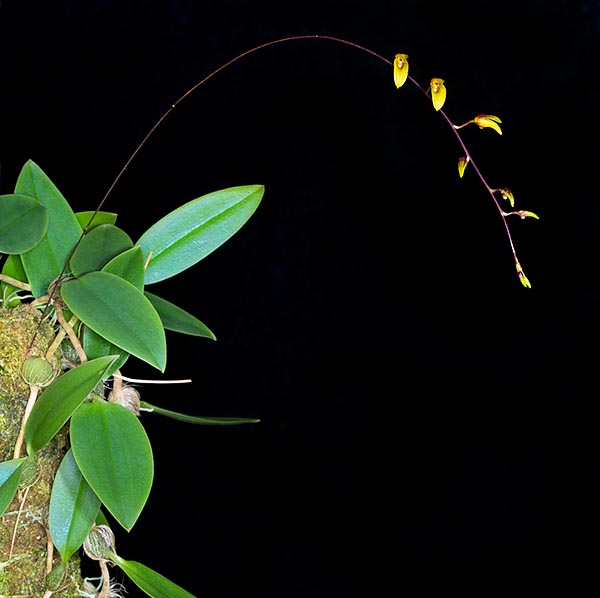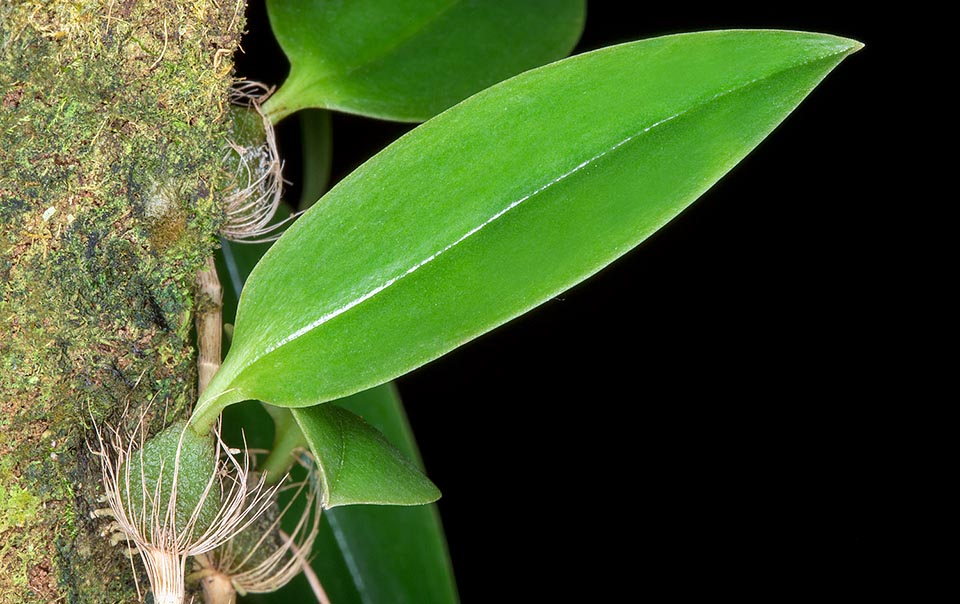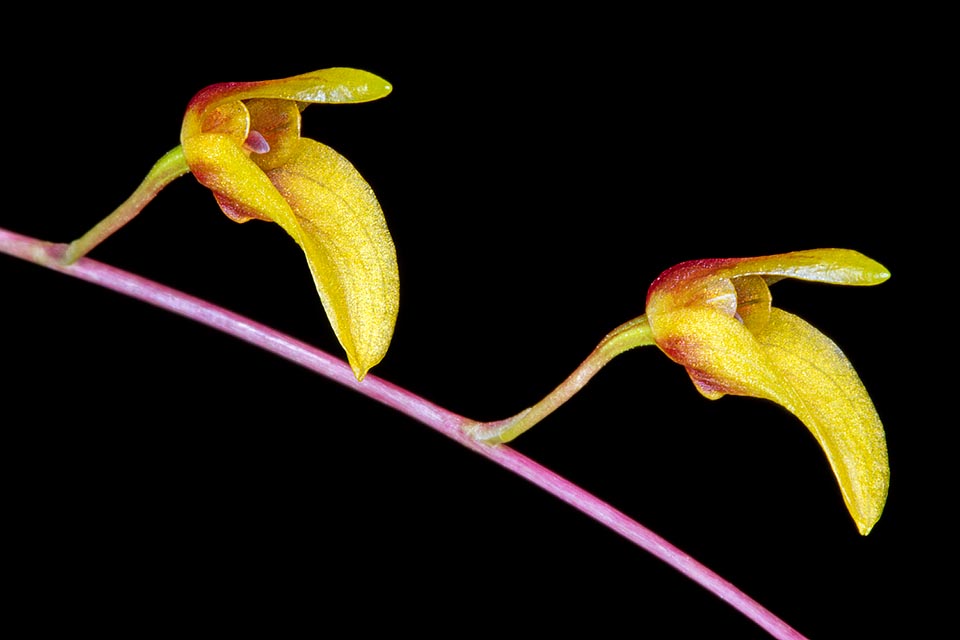Family : Orchidaceae

Text © Pietro Puccio

English translation by Mario Beltramini

The Bulbophyllum hengstumianum is an epiphyte native to Bismarck Archipelago © Giuseppe Mazza
The name of the genus is the combination of the Greek substantives “βολβός” (bolbos) = bulb and “φύλλον” (phyllon) = leaf, with reference to the leaves that grow at the apex of the pseudobulbs; the species is dedicated to Dr. Ronald J.M. Van Engstum, inspirer of the Netherlands Centre for Biodiversity Naturalis, Leiden.
The Bulbophyllum hengstumianum J.J.Verm., de Vogel & A.Vogel (2010) is an epiphytic species with creeping rhizome and pseudobulbs, spaced of 3-5 cm, ovoidal, slightly compressed, of about 1 cm of diameter, provided at the apex of one single subsessile ovate leaf with acute apex, 3,5-4 cm long, and 1,5-2 cm broad.
Initially erect inflorescence, then arcuate, on an up to about 30 cm long peduncle, 10-15 cm long, with 7-13 flowers, not completely open, of red colour marginally yellow; pedicel and ovary about 5 mm long. Ovate dorsal sepal with acute curved apex on the column, about 6 mm long and 3,5 mm broad, lateral sepals united up almost to the apex to form an ovate synsepal 7-8 mm long and about 5 mm broad, ovate petals with obtuse apex, about 2,5 mm long and 2 mm broad, ovate labellum with obtuse apex, about 1,5 mm long and 1 mm broad, and about 1 mm long column.
It reproduces by seed, in vitro, and at amateur level by division, with each section provided of at least 3-4 pseudobulbs, at the vegetative restart.

Creeping rhizome with ovoidal pseudobulbs of about 1 cm of diameter, provided at the apex of a single subsessile 3,5-4 cm leaf © Giuseppe Mazza

Little known in cultivation, has an initially erect inflorescence, then arcuate, on an even 30 cm long peduncle with 7-13 flowers not fully open © Giuseppe Mazza
The species is reported in the appendix II of the CITES (species whose trade is internationally ruled).
→ For general notions about ORCHIDACEAE please click here.
